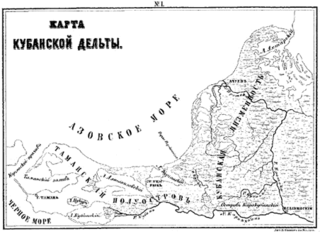Bikhakhanim

Bikhakhanim was the reigning princess of a small polity located on the Taman Peninsula in southern Russia. She may have been of Circassian, Georgian, or Cuman origin. The Russian historian F. K. Brun, suggests that the name of the princess might not have been "Bikhakhanim," but "Bikhakhatun,"[1] and that, if so, she was the daughter of the Georgian prince Beka II Jakeli (died 1391), the ruler of Samtskhe and Klarjeti.[2]
However, "Beki" means "Ruling Woman" in Mongolian and "Khanim" was the Medieval title of a female patrilineal descendant of Genghis Khan (equivalent to "Khan" for a male). 1419 was the year that the sons of Tokhtamysh Khan of the Golden Horde killed his rival Edigu the Khan of the Nogai Horde as a continuation of the Tokhtamysh–Timur war and reestablished control over the region.
Bikhakhanim was married in 1419 to the Genoese Jew Simeone de Guizolfi, who through this marriage became ruler of that country under Genoese overlordship. One of his heirs, Zacharias de Guizolfi, was still reigning in 1482.
See also
Notes
References
- Brosset, Marie-Félicité. Hist. de la Géorgie.
- Brun, F. K. Trudy Pervago Archeologickeskago Syezda v Moskve, 1869, ii. 386
- Löwe, Richard. Die Reste der Germanen am Schwarzen Meere, p. 42, Halle, 1896.
- Rosenthal, Herman. "Bikhakhanim". Jewish Encyclopedia. Funk and Wagnalls, 1901-1906.
![]() This article incorporates text from a publication now in the public domain: Singer, Isidore; et al., eds. (1901–1906). "article name needed". Jewish Encyclopedia. New York: Funk & Wagnalls Company.
This article incorporates text from a publication now in the public domain: Singer, Isidore; et al., eds. (1901–1906). "article name needed". Jewish Encyclopedia. New York: Funk & Wagnalls Company.